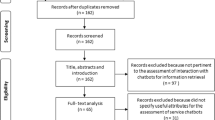Abstract
This paper discusses experiences from monitoring command and control in research with the C3Fire microworld environment. The experiences are based on three microworld studies where a total of 192 persons participated as students. 132 of these students were computer-literate undergraduate students and 60 were professional military officers. During the three studies, different monitoring strategies were used to meet the goals of the studies. The main monitoring goal has been to detect different aspects of the teamwork performed by the subjects in the experiments. The focus of the monitoring goal was: 1) to monitor the effectiveness of the students' work and the communication patterns between the students in a command and control situation 2) to monitor the students' situation awareness (SA) when the students were using a graphical- or a textual-based information system 3) to monitor the students' work procedures and the possibilities of automatically analysing textual information sent by e-mail.





Similar content being viewed by others
References
Artman H (1999) Co-operation within and between hierarchical units in dynamic decision making. Ergonomics 42(11):1404–1417
Artman H, Granlund R (1998) Team situation awareness using graphical or textual databases in dynamic decision making. In: Proceedings of ECCE-9, the Ninth European Conference on Cognitive Ergonomics, Limerick, Ireland, 24–26 August, 1998
Artman H, Persson M (2000) Old practices—new technology: observations of how established practices meet new technology. In: Dieng R, Gibson A, Kersenty L and De Michelis G (eds) Designing cooperative systems, Ios Press Ohmsha, Amsterdam, pp 35–49
Brehmer B, Svenmarck P (1995) Distributed decision making in dynamic environments: time scales and architectures of decision making. In: Caverni JP, Bar-Hillel M, Barron FH and Jungermann H (eds) Contributions to decision making—1, Elsevier Science, Amsterdam
Endsley M (1995) Toward a theory of situation awareness in dynamic systems. Hum Factors 37(1):32–64
Granlund R (1997) C3Fire—a microworld supporting emergency management. Licentiate thesis, Linköping University
Granlund R, Johansson B and Persson M (2001) C3Fire: a mmicroworld for collaboration training in the ROLF environment. In: Proceedings of SIMS 2001, the 42nd Conference on Simulation and Modelling, Simulation in Theory and Practice, Porsgrunn, Norway, 8–9 October, 2001
Johansson B, Artman H, and Waern Y (2001) Technology in crisis management systems—ideas and effects. Doc Des 2(3):247–258
Johansson B, Granlund R (2001) Feedback in shared digital maps. In: Lind M (ed) Proceedings of EAM 2001, Copenhagen, Denmark, 25–27 June, 2001
Johansson B, Granlund R and Waern Y (2000) The communicative aspects of distributed dynamic decision making in the ROLF-environment. In: Friman H (ed) Proceedings of the 5th International Conference on Naturalistic Decision Making, Tammsvik, Sweden, 26–28 May, 2000
Persson M, Johansson B (2001) Creativity or diversity in command and control. In: Proceedings of The Ninth International Conference on Human-Computer Interaction, New Orleans, LA, 5–10 August, 2001
Author information
Authors and Affiliations
Corresponding author
Rights and permissions
About this article
Cite this article
Granlund, R. Monitoring experiences from command and control research with the C3Fire microworld. Cogn Tech Work 5, 183–190 (2003). https://doi.org/10.1007/s10111-003-0129-8
Published:
Issue Date:
DOI: https://doi.org/10.1007/s10111-003-0129-8




